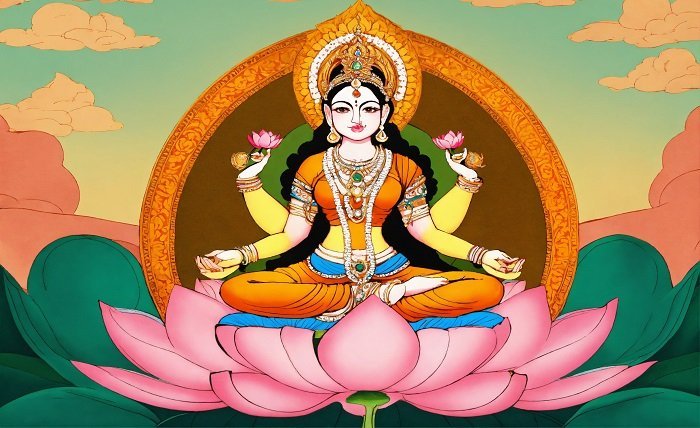Unlocking Divine Wisdom: A Deep Dive into the Power of the Saraswati Chalisa
In the rich tapestry of Hindu devotional literature, few texts hold as much significance for seekers of knowledge, students, and artists as the Saraswati Chalisa. This sacred hymn, a forty-verse prayer dedicated to Goddess Saraswati, the embodiment of wisdom, music, art, and learning, is a powerful tool for spiritual and intellectual awakening. Chanting or reciting the Saraswati Chalisa is not merely a ritual; it is an invocation, a heartfelt call to the divine mother to bestow her grace upon the devotee. It is designed to calm the mind, sharpen the intellect, and remove the obstacles that cloud our understanding, making it an essential practice for anyone embarking on a journey of learning or creative pursuit. The profound vibrations and deep philosophical meaning embedded within each verse of the Saraswati Chalisa have provided solace and strength to millions for centuries, establishing it as a timeless classic in the world of devotional poetry.
The Divine: Who is Goddess Saraswati?
To truly appreciate the depth of the Saraswati Chalisa, one must first understand the deity it venerates. Goddess Saraswati is one of the most revered goddesses in the Hindu pantheon, representing the flowing essence of consciousness, creativity, and communication. She is often depicted as a serene woman dressed in pure white, seated on a lotus, symbolizing purity and transcendence over the material world. Her four arms hold a veena (a string instrument), a book (scriptures), and a mala (rosary), each symbolizing different aspects of knowledge and art. The vehicle associated with her is the graceful swan, believed to possess the mythical ability to separate milk from water, symbolizing the power to discriminate between right and wrong, the eternal and the transient. The Saraswati Chalisa beautifully elaborates on these iconographic details, weaving them into verses of praise that highlight her divine attributes and compassionate nature towards her devotees.
The Meaning and Structure of a Chalisa
The term “Chalisa” is derived from the Hindi word “chalis,” which means forty. As the name suggests, a Chalisa is a hymn consisting of forty verses, excluding the introductory couplets (Mangalacharan) and the concluding prayers. This specific structure is a hallmark of Hindu devotional poetry, particularly in the Awadhi and Braj languages. The format of a Chalisa is designed for easy memorization and rhythmic recitation, making it accessible to everyone. The verses follow a simple rhyme scheme and meter, which creates a melodic flow when chanted. The Saraswati Chalisa adheres to this traditional structure, beginning with verses praising the goddess and her grandeur, moving into narratives of her blessings and exploits, and culminating in a heartfelt appeal for her mercy and guidance. This structured approach to devotion helps focus the mind and allows the devotee to connect with the divine in a systematic and deeply personal way.
The Benefits of Reciting the Saraswati Chalisa
The regular recitation of the Saraswati Chalisa is believed to confer a multitude of benefits upon the devotee, spanning the intellectual, spiritual, and psychological realms. Primarily, it is chanted to gain clarity of thought, enhance memory, and improve concentration, making it an invaluable practice for students, especially during exam periods. Artists, writers, and musicians invoke the Saraswati Chalisa to overcome creative blocks and to find inspiration and eloquence in their work. On a deeper level, the hymn helps in purifying the heart and intellect, removing the darkness of ignorance (tamas) and inertia, and replacing it with the light of knowledge (sattva). The vibrational energy of the Sanskrit or Hindi verses is said to calm the nervous system, reduce anxiety, and instill a profound sense of peace and confidence. By sincerely engaging with the Saraswati Chalisa, one invites the goddess’s energy into their life, paving the way for academic success, artistic brilliance, and spiritual progress.
A Verse-by-Verse Exploration of Key Themes in the Saraswati Chalisa
While a full line-by-line explanation is extensive, exploring key themes within the Saraswati Chalisa reveals its profound depth. The opening verses, “Jai Jai Jai Saraswati Maa, Sabhi Sukh Var Deena Dayala…,” are a powerful invocation, calling upon the goddess who bestows happiness and is compassionate towards the downtrodden. The Saraswati Chalisa describes her divine form, her radiant white complexion symbolizing ultimate purity and knowledge that dispels all ignorance. Verses glorify her as the creator of the universe’s music (through the veena) and the source of all speech and wisdom. It recounts her role in blessing great sages and deities, establishing her as the ultimate authority on Vidya (knowledge). The hymn also includes humble prayers, acknowledging the devotee’s flaws and seeking her grace to overcome shortcomings like foolishness and lack of focus. This thematic journey within the Saraswati Chalisa guides the devotee from admiration to surrender.
The Right Way to Chant: Rituals and Practices for Recitation
While the sincere devotion of the heart is paramount, following certain practices can enhance the efficacy of reciting the Saraswati Chalisa. Traditionally, it is chanted in the morning during the Brahma Muhurta, the period just before sunrise, which is considered highly conducive for studying and spiritual practices. Before beginning, one should sit facing east or north in a clean, quiet space. It is beneficial to have an image or idol of Goddess Saraswati and to light a lamp or diya. Offering white flowers, such as jasmine or lotus, and sweets like white tilkut or boondi is customary. The recitation should be done with a calm mind, clear pronunciation, and focused attention on the meaning of the verses. While chanting the Saraswati Chalisa 108 times is a common practice during Navratri, even a daily recitation of one or five times can yield significant benefits. The key is consistency and the quality of devotion, not just the quantity of repetition.
The Saraswati Chalisa in Modern Times: Relevance for Students and Professionals
In today’s hyper-competitive and fast-paced world, the relevance of the Saraswati Chalisa has only grown. Students facing immense pressure to perform academically find solace and strength in its verses. It serves as a spiritual tool to combat anxiety, improve focus while studying, and approach exams with a calm and confident mind. Beyond formal education, professionals in fields requiring constant learning, innovation, and clear communication—such as writers, lawyers, teachers, software engineers, and artists—turn to the Saraswati Chalisa for inspiration and clarity. It helps sharpen the intellect, making problem-solving more effective and creativity more fluid. In essence, the Saraswati Chalisa bridges the ancient and the modern, providing a timeless formula for unlocking one’s highest cognitive and creative potential, proving that divine wisdom is the most relevant tool in any era.
Incorporating the Saraswati Chalisa into Your Daily Sadhana
Integrating the recitation of the Saraswati Chalisa into one’s daily spiritual practice, or Sadhana, can create a foundation for a life filled with wisdom and purpose. It doesn’t require hours of time; even dedicating 10-15 minutes each day can make a profound difference. One can incorporate it into their morning prayer routine after meditation. For those new to the practice, starting by listening to a melodious version by renowned singers can help with learning the correct pronunciation and tune. Keeping a printed copy or a digital version on one’s phone ensures it is always accessible. The goal is to make the chanting of the Saraswati Chalisa a natural and cherished part of the day, a sacred pause to reconnect with the source of all knowledge before engaging with the world’s challenges. This daily communion with Goddess Saraswati cultivates an inner environment where learning and creativity can flourish.
Conclusion
The Saraswati Chalisa is far more than a collection of forty verses; it is a vibrant, living conduit to the divine energy of knowledge and consciousness. It represents a millennia-old tradition of seeking wisdom not just for worldly gain but for spiritual liberation and the betterment of the self and society. Whether one approaches it with faith for academic success, with a artist’s yearning for inspiration, or with a philosopher’s quest for truth, the Saraswati Chalisa responds with boundless grace. By sincerely reciting and reflecting upon its meaning, we open ourselves to the flow of divine insight, allowing the music of the veena to tune our minds and the light of wisdom to illuminate our path, guiding us from the darkness of ignorance toward the eternal light of knowledge.
FAQs
1. What is the best time to recite the Saraswati Chalisa?
The most auspicious time to recite the Saraswati Chalisa is during the early morning “Brahma Muhurta” (approximately 1.5 hours before sunrise), especially on Wednesdays and during the festival of Vasant Panchami and Navratri.
2. Can I recite the Saraswati Chalisa without a formal ritual?
Yes, absolutely. While rituals can enhance focus, the core requirement is sincerity and devotion. You can recite the Saraswati Chalisa anytime and anywhere with a clean heart and focused mind.
3. How many times should I chant the Saraswati Chalisa for it to be effective?
There is no fixed rule. Consistency is more important than quantity. Chanting it once with full understanding and devotion is more powerful than chanting it mechanically multiple times. A common practice is to chant it 5, 11, or 108 times during important periods.
4. Do I need to understand the exact meaning of each word?
While it is highly beneficial to understand the overall meaning and themes of the Saraswati Chalisa, the vibrational quality of the sacred sounds is also powerful. Over time, trying to learn the meaning will deepen your connection to the prayer.
5. Is the Saraswati Chalisa only for students?
No, the Saraswati Chalisa is for anyone seeking knowledge, clarity, creativity, and wisdom. This includes professionals, artists, writers, musicians, and any spiritual seeker aiming to overcome ignorance and gain deeper insight into life.







